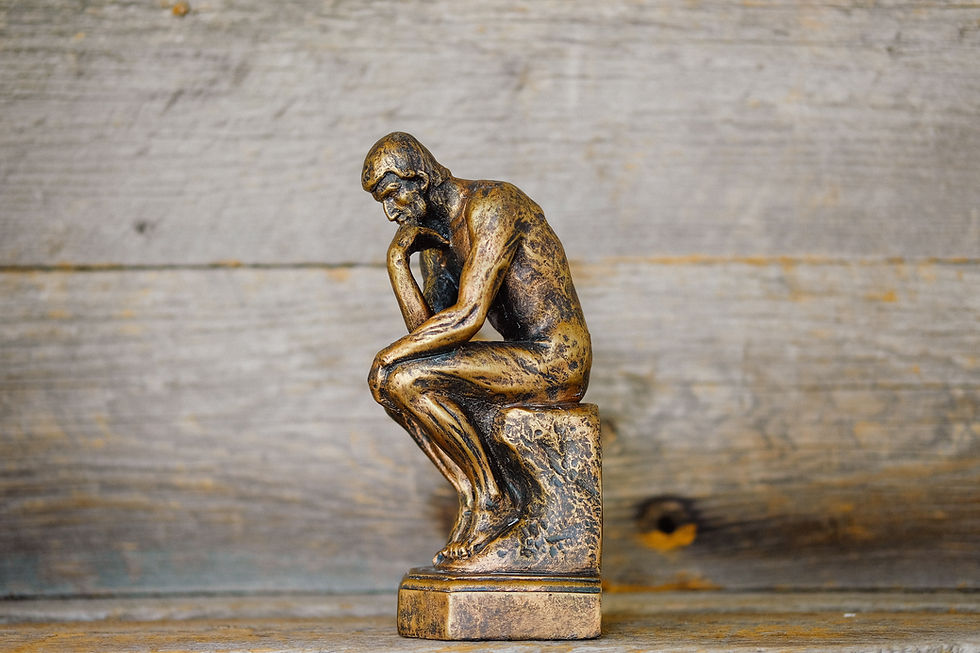5 Easy steps to overcome emotional buffering
- Nikki

- Jul 1, 2021
- 3 min read
Updated: Feb 22, 2024

In Why Emotional Buffering is More Painful Than Stepping on a Lego, I learned we ALL buffer our emotions. So let's take a minute and normalize it. And take an extra minute to give yourself some grace.
Emotional buffering can be a slippery slope into an unhealthy pattern of avoiding our circumstances, moods, or relationships. And it can happen unknowingly. Most importantly, though, is that you can overcome the unhealthy patterns.
What are some clues we can tune into to know if our glass of wine or shopping trips have gone too far?
First, think about the BIG things.

Ask yourself, "What are the BIG things happening in my life that I've been minimizing their impact on my joy and health?" Examples include:
a job loss, job gain, promotion, or demotion
relocation locally or across the country
isolation during the pandemic
death of a friend or family member, including pets
debt such as student loans, credit housing, take out
break-up, divorce, separation, marriage, infidelity
weight gain, weight loss, chronic health issues, chronic mental health issues
buying a house, buying a car, starting a business, attending college
having a baby, having a miscarriage, adoption
Second, make a handwritten list.

Pull out a piece of paper or notebook and a pen(cil). The list above is not exhaustive. Only you know what the BIG things are in your life. NOTE: Your big thing may not be what other's define as big. Only YOU get to decide if it's BIG to YOU.
Why are we writing the old fashioned way? A review of a couple of research articles points to findings that:
the brain recognizes paper and pen(cil) as more "real" and connects better to memory
there are more brain responses connected with internal feelings when using paper and pen(cil)
the delicate, precisely controlled physical act of forming handwritten letters activates more complex learning neural connections
these findings weren't found with typing on an electronic device
We want to connect to our emotions that are keeping us from living authentically. So, for step 2 write down the BIG things that you thought about in step 1. Don't minimize anything. If it popped in your mind, write it down. If your mind recalled it then it has some significance in your life.
Third, circle the 1.

Circle the 1 BIG thing that you are intuitively drawn to on your list. Put this list in a safe place where you can revisit it periodically.
Fourth, step back into your daily life.
Begin paying attention to when you're using one of the nine ways we might buffer our emotions. When you realize you're buffering, pause and ask yourself, "What am I avoiding doing or feeling right now?" If the answer is 'nothing', keep doing what you're doing.
If something from your BIG list intuitively pops in your mind, ask yourself the next two questions:
"What am I afraid will happen if I do or feel it?"
"What good might come from doing or feeling this?"
Fifth, write down the answers.
Go to your BIG list and write down your answers. If you aren't near your list, make a digital note to revisit later.
the goal.

The goal is to start recognizing when you are emotionally buffering so you can identify your emotions that are keeping you from living authentically.
Good news! Identifying and differentiating your emotions is a skill you can learn. People who are better at doing this are better at:
regulating their emotions in the moment
managing their feelings in more adaptive ways
reducing their negative feelings more effectively
If you struggle to identify and differentiate your emotions, use a feel wheel. As an empath that historically pushed down all my emotions and spewed a lot of dark energy into the world uncontrollably, working with a feel wheel has brought forth my light energy and drastically reduced my anxiety.
Once you can name your emotions, you can begin to shape your responses to the circumstances, mood or relationships you've been avoiding because of the pain. And this pain has kept you on the sidelines of life.
You can overcome emotional buffering and live authentically. Choose to live bravely, my friend.



Comments